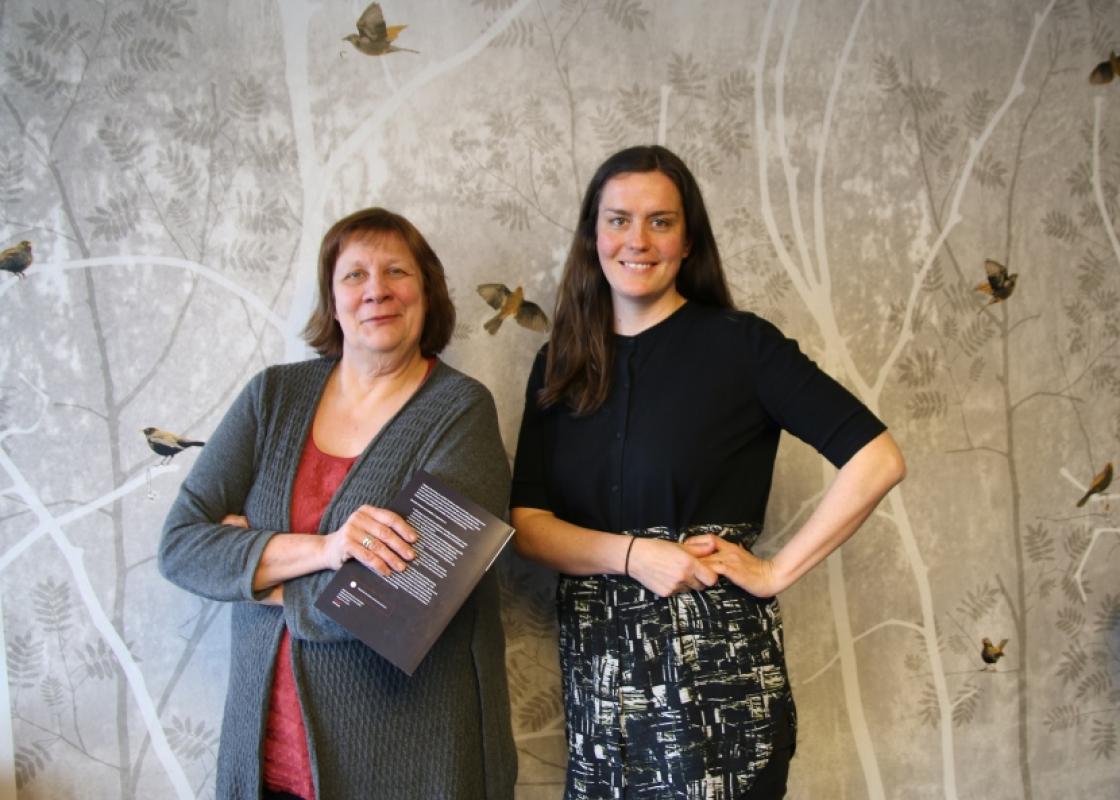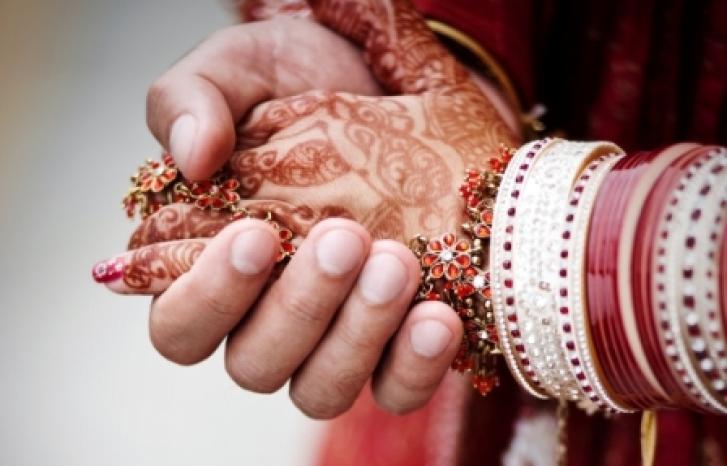“I usually say that when you enter a Sami family, you have to sit on the floor, figuratively speaking. You have to be very humble. (…) I think this has a lot to do with their history, when the Norwegians came and told them ‘what you’re doing is wrong, you have to do it this way.’”
The quote above is taken from a report on the social services’ and the police’s experiences with domestic violence in Sami communities, written by the Norwegian centre for violence and traumatic stress studies (NKVTS). The report uncovers major barriers between Sami victims of violence and the social services and the police, which consequently result in poor support.
“In general, few of those who experience domestic violence seek help,” says Ingvil Thallaug Øverli, who has been a researcher in the project and responsible for conducting the focus group interviews.
“But we know that Sami users have larger barriers than other Norwegians when it comes to seeking help from the public support system,” she says.
See also: Violence puts women in their place
Lack trust
Together with Ann-Kristin Finstad, Øverli has interviewed employees within the police, the health service and the social service in areas that traditionally have had and still have a Sami population. Experiences and challenges concerning their work with domestic violence in Sami communities were discussed, as well as the causes for these and what might be done in order to develop this work.
“One of the most important reasons why people with Sami background don’t report violence is that they lack trust in the state apparatus," says project leader Solveig Bergmann.
“Much of the reason for this is that those working within the support system have limited knowledge of Sami language and culture."
“Much of the reason for this is that those working within the support system have limited knowledge of Sami language and culture, and that violence and abuse is highly tabooed in Sami communities. But another important reason is the Sami population’s inherent shame caused by the Norwegianisation policy.”
The Norwegianisation policy was institutionalised in legislation and practical politics from the mid-1800s. Sami language, history, and ethnic background were put to silence many places and in many families, which resulted in a loss of language and identity among other things.
Fear of being ostracised
“Isn’t it more difficult to report domestic violence in smaller communities where everybody knows everybody than in larger cities?”
“Yes, but within the Sami clan society we see an even stronger barrier when it comes to seeking help outside of the family than we do in other small communities. The fear of being ostracised from the family and that family ties may be broken seems stronger among Sami people than among other Norwegians. This assumption is supported by statements from the participants in our study and other research on Sami people and other ethnic minorities,” says Bergman.
Laestadianism’s influence on Sami culture and society also plays a part in strengthening the attitude that it is the victim who must bear the shame and guilt for the violence, not the offender.
“The tabooing of sex and body, the silence concerning everything private, and the idea that issues are solved within the family. We find such ideas everywhere in Norway, but there are indications that these taboos are stronger within Laestadian and Sami communities,” says Bergman.
All the participants in the study found it difficult to ask direct questions about violence in their encounter with Sami users, but for different reasons.
“Some because they identified themselves as Sami. Others felt that they were perceived as representatives of the greater society, a difficult position because of the collective historical trauma that the Norwegianisation policy has inflicted upon the Sami people,” says Bergman.
See also: Girls beaten by their boyfriend avoid the word 'violence'
Sensitive topic
According to Ingvil Thallaug Øverli, the biggest problems the researchers themselves encountered in their work with the report had to do with the fact that the topic is so sensitive and tabooed. It was therefore a major advantage that they got a person with Sami background on board both in the recruitment work and as co-moderator.
“In many instances we were dealing with small close communities where everybody knows everybody. This made it slightly difficult to recruit participants for the study. Some were afraid that what they said within the group would come out, and that others would know who had said what,” says Øverli.
The participants were recruited from four geographical areas with populations that have traditionally been Sami: two Northern Sami areas, one Lule Sami area, and one Southern Sami area.
“Many with Southern Sami background experience that they are not met with understanding from the public services.”
“In the Southern Sami area the Sami are a minority, which has a lot to say concerning which experiences were highlighted in the focus group interviews,” says Øverli.
“In some areas there is very little knowledge about the Southern Sami population and culture, and many with Southern Sami background experience that they are not met with understanding from the public services. Following such experiences, one may end up not seeking help at a later stage after being exposed to violence. The participants in the focus groups who had Sami background themselves experienced that people contacted them specifically, and that many were hesitant about contacting those without Sami background.”
According to her, the focus group discussion was nevertheless characterised by consensus. You risk that some questions are not asked, and if some people think that there are issues they will not gain support for in the group, they don’t address them.
“In the groups in which the participants with Sami background came from areas of Sami majority, the Samis had a clear authority. They were the ones who spoke the most. The non-Sami participants in the group said they were there to learn. This was different in the groups where the participants with Sami background came from Sami minority areas. Here the Sami participants had to make more effort to take the word and get through to the rest of the group.”
Women more exposed
According to Øverli, including both women and men as victims of violence in the report does not undermine the fact that women are more exposed.
“We know that most of those who are exposed to violence are women and that the violence is performed by men. But if we restrict domestic violence only to involve female victims, we miss the fact that there are also boys and men who are victims of violence. This means that we need other explanatory models than just gender power theories.”
Solveig Bergman emphasises that domestic violence also includes a lifecycle perspective.
“Although partner violence is emphasised here, which is primarily performed by men towards women, domestic violence is also about violence towards children,” she says.
“The gender power perspective is stronger in Sweden, where it is largely emphasised that most abusers are men. In Norway we prefer to take into consideration that women also exercise violence and that men are also victims, or that violence may occur in same-sex relations,” says Bergman.
“Why is gender equality often neglected in Sami communities?”
“The feminist movement in the 1970s and 80s was established around the same time as the Sami in Norway began to fight for their own identity. The Sami Parliament and other Sami institutions were established, and specific education programmes were founded. Perhaps they didn’t have enough energy to handle internal conflicts, and Sami feminists were accused of being ‘Norwegianised’,” says Bergman.
See also: Men's violence against women: Not only a question of power
Silent about violence
According to her, the myth about the strong Sami woman is used internally within Sami communities today in order to keep women from talking about the violence they are exposed to.
“You shouldn’t experience violence in the first place, but if you do you shouldn’t talk about it. It breaks with the ideal of the Sami identity as strong and self-reliant, an ideal that applies to both men and women, but to women in particular,” says Bergman.
“Even the children in many Sami families are raised to be extremely independent, but being raised to deal with everything on your own also has some disadvantages. When it comes to domestic violence, it is important to be able to seek help from the world outside. But this requires trust and that we avoid stigmatising an entire group. Also within Sami communities there are major differences.”
“Half of the women and one third of the men with Sami connections experience violence during their lives.”
The report concludes that it is important to understand Sami ways of communication and Sami culture, and to use Sami language or an interpreter when working with victims of domestic violence. It also recommends further research on the area.
“The background for this study is previous research which shows that half of the women and one third of the men with Sami connections experience violence during their lives. Our report gives insight into what the support system says, so now we need concrete measures,” Bergman emphasises.
See also: Male victim's of women's violence fear not being believed
The younger are more open
Astri Dankertsen, post.doc at Nord University, also views the barriers of reporting domestic violence in Sami communities in connection with traumatic experiences related to the Norwegianisation policy.

“Due to the violations that the Sami population was exposed to, many people with Sami background have lost their language and their trust in the greater society. Reporting domestic violence is difficult in any case. When you lack trust in the authorities, the threshold for seeking help becomes even higher. Particularly within those areas where the Sami population also represents a minority,” she says.
“The Sami also have a long tradition for not talking to others about family matters. You should deal with it yourself and not involve outsiders. Being able to deal with your own problems is a good thing, but it can also become destructive, as in cases of domestic violence.”
According to Dankertsen, the younger generation of the Sami population is now speaking up for more openness.
“Media reports show that particularly younger Sami people want more openness, also within the family. Examples of this are the Tysfjord case and all the reactions that have come up in the wake of this.”
She emphasises that reporting domestic violence is particularly difficult within small, closed communities where everybody knows everybody.
“Moreover, when it comes to ethnic minorities, reporting violence within the family can have major consequences. This also applies to immigrant communities that experience stigmatisation in the first place. By reporting the violence, the victims fear that stigmatisation and discrimination will increase. You don't only represent yourself, you represent an entire culture.”
“What are your thoughts on the gender perspective when it comes to domestic violence in Sami communities?”
“There hasn’t been much research on this, but we do know that Sami women are more exposed to violence and sexual abuse than other Norwegian women. The view on women in Sami communities is often coloured by Laestadianism: women should remain silent in gatherings and sexuality is not discussed.”
Translated by Cathinka Dahl Hambro.
- On March 8, NKVTS launched the report ‘Om du tør å spørre, tør folk å svare’. Hjelpeapparatets og politiets erfaringer med vold i nære relasjoner i samiske samfunn. (“‘If you dare to ask, people dare to answer.’ The Social Services’ and the Police’s experiences with domestic violence in Sami communities.”)
- The report is written by Ingvil Thallaug Øverli, Solveig Bergman and Ann-Kristin Finstad. Øverli has conducted the fieldwork in collaboration with project co-worker Finstad, while Bergman has been responsible for the project.
- The report was commissioned by the Ministry of Justice and Public Security, which, in collaboration with the Sami Parliament, initiated research on domestic violence in Sami communities.
A study based on data from the population and health study SAMINOR 2 of psychological, physical, and sexual violence among the Sami and the non-Sami population in Norway (Eriksen, Hansen, Javo, and Schei, 2015). The study shows that half of the female Sami respondents had been exposed to violence during their lives compared to one third of the non-Sami women in the same geographical area. Forty per cent of the male Sami population and twenty-three per cent of the non-Sami men had experienced violence during their lives. https://www.ncbi.nlm.nih.gov/pubmed/25969164



